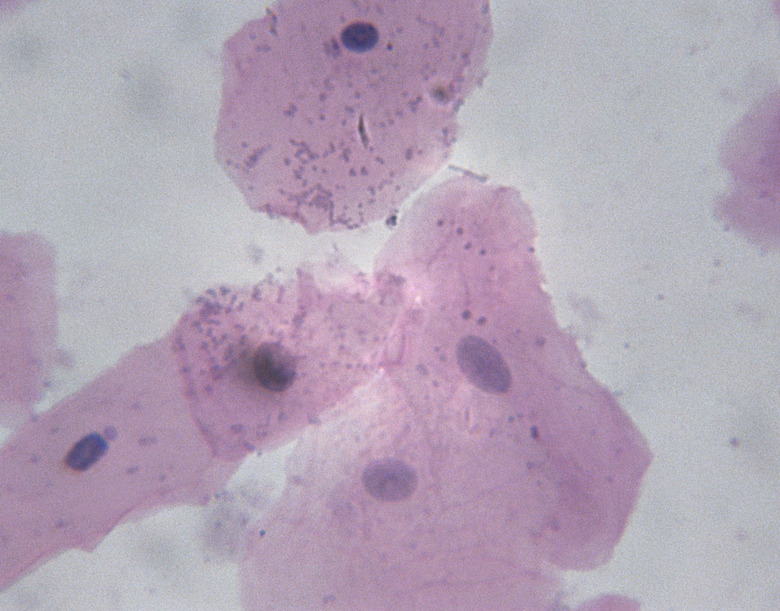Evolutionary Relationships Between Prokaryotes & Eukaryotes
Living cells are of two major types, prokaryotes and eukaryotes. About 2 billion years ago only prokaryotes inhabited our world. The main difference between prokaryotes and eukaryotes is that eukaryotes have a nucleus and prokaryotes don't. In biology, "pro" means "before" and "eu" means "true," while "karyote" refers to the nucleus. The biological evidence points to the evolution of the larger, more complex eukaryote from the smaller, simpler prokaryote.
Membranes
Membranes
Most prokaryotes are bacteria, while humans, animals, plants and fungi are eukaryotes.The prokaryotic cell has only one membrane, the plasma membrane, which surrounds its cellular contents. The eukaryotic cell also has a plasma membrane, but, in addition, it is filled with many membrane-enclosed compartments. The membranes of both the prokaryotic and the eukaryotic cell consist of a lipid bilayer. The origin of the membrane structures within the eukaryotic cell can be explained by an early large prokaryotic cell engulfing smaller prokaryotic cells, according to the endosymbiosis theory.
DNA
DNA
Both prokaryotic and eukaryotic cells contain DNA, which directs the operation of the cell. The identical genetic code is used in prokaryotic and eukaryotic cells. Although the same kind of DNA is found in prokaryotic and eukaryotic cells, the DNA is naked and forms a loop or circle in prokaryotes, while it is composed of linear strands and covered with protein in eukaryotes.
Ribosomes
Ribosomes
Both prokaryotic and eukaryotic cells contain ribosomes. Ribosomes are made up of proteins and RNA and are the site of protein synthesis in both cell types. The building blocks to make protein are amino acids. The prokaryotic and the eukaryotic cells use the same 20 amino acids to make proteins, indicating relatedness.
Mitochondria and Chloroplasts
Mitochondria and Chloroplasts
Eukaryotes contain mitochondria or chloroplasts. Mitochondria within animal cells and chloroplasts within plant cells look like prokaryotes. Mitochondria and chloroplasts are similar in size and features to prokaryotes. The deep folds of the inner mitochondrial membrane, called cristae, resemble the folds in the prokaryotic cell, called mesosomes. Both cristae and mesosomes function in aerobic cellular respiration. Cellular respiration generates energy for the cell or organism. Because aerobic respiration (using oxygen) yields more energy than anaerobic respiration (without oxygen), the endosymbiosis theory holds that mitochondria were acquired when an anaerobic prokaryotic cell engulfed aerobic prokaryotes and so reaped the benefits of aerobic respiration. Chloroplasts, like mitochondria, produce energy for plant cells. Both mitochondria and chloroplasts have their own circular DNA and can function independently of the eukaryotic host cell.
Cite This Article
MLA
Blue, Marie-Luise. "Evolutionary Relationships Between Prokaryotes & Eukaryotes" sciencing.com, https://www.sciencing.com/evolutionary-relationships-between-prokaryotes-eukaryotes-8705633/. 24 April 2017.
APA
Blue, Marie-Luise. (2017, April 24). Evolutionary Relationships Between Prokaryotes & Eukaryotes. sciencing.com. Retrieved from https://www.sciencing.com/evolutionary-relationships-between-prokaryotes-eukaryotes-8705633/
Chicago
Blue, Marie-Luise. Evolutionary Relationships Between Prokaryotes & Eukaryotes last modified August 30, 2022. https://www.sciencing.com/evolutionary-relationships-between-prokaryotes-eukaryotes-8705633/
